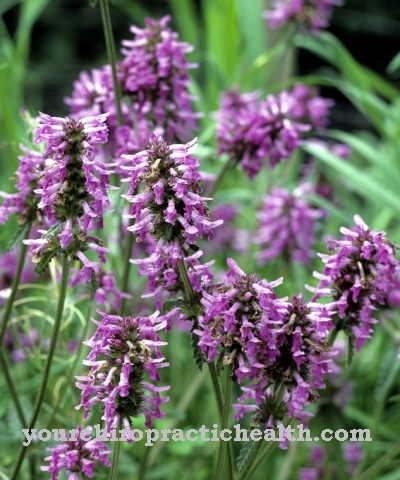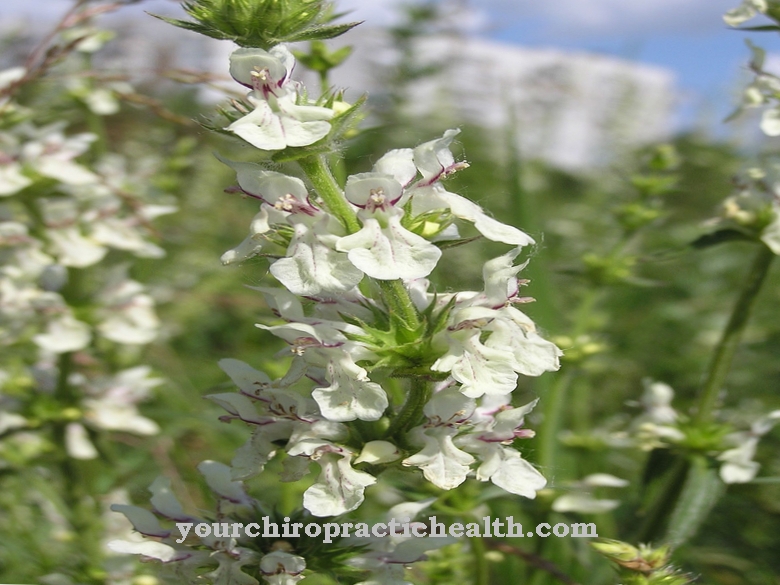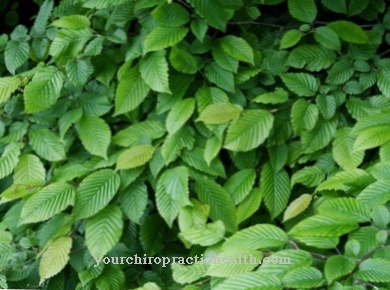Of the Sundew is one of the lesser known medicinal plants. It can be used to relieve convulsive coughs, among other things.
Occurrence & cultivation of the sundew

A typical feature of the plant are the clear droplets that shine on it. However, behind these drops there is a sticky liquid. It is mistaken for nectar by insects, so they land on the sundew. If an insect sticks there, it becomes prey for the carnivorous plant and is digested by it.
The height of the round-leaved sundew is a maximum of 30 centimeters. Its round leaves are arranged in a basal rosette. A grape-like inflorescence is formed from the white flowers. The flowering time of the medicinal plant lasts from June to August. The round-leaved sundew is native to North America, East Asia and Europe. It also occurs in Germany. Since the species is considered endangered, it is under nature protection in this country. For this reason, the plant must not be collected in nature yourself.
Effect & application
Round-leaved sundew has been used by humans as a medicinal plant since the 12th century. For this purpose, all parts of the plant with the exception of the root are used. There are substances like plumbagin in the sundew herb. These are derived from 1,4-naphthoquinone.
The naphthoquinones are said to contribute to the healing properties of the plant. Naphthoquinone, for example, has an antitussive and antispasmodic effect. Other ingredients are flavonoids, tannins, mucilage, bitter substances, malic acid, formic acid, citric acid, anthocyanins and essential oils.
There are different options available for using the sundew. The plant can be used in the form of ready-made preparations, as a tea or as a tincture. Nowadays, finished products are primarily used.
The traditional way of using it is drinking sundew tea. A teaspoon of sundew herb is poured over a cup of hot, boiled water. The subsequent steeping time is 10 minutes. After straining the tea, it can be taken in small sips. The usual dose is one to two cups a day.
Due to the powerful effects of the sundew, experts advise against more than two cups of tea a day. In the event of an overdose, there is a risk of shortness of breath and coughing fits. In addition, a break should be made after an application period of six weeks in order to avoid negative long-term effects. In addition, the effectiveness of the medicinal plant remains in this way, since no habituation occurs. After the break, the sundew tea can be used again for six weeks.
Another treatment option is tincture. You can also make it yourself. For this purpose, dried or fresh sundew is filled into a screw-top jar. Then the contents of the glass are poured over with alcohol or double grain. The mixture must steep for a period of two to six weeks in order to develop its healing effect. After straining, the user fills the contents of the glass into a dark bottle.
One to three times a day, 10 to 20 drops of the tincture can be taken. It can also be diluted with water without any problems. Ready-made sundew preparations such as drops, syrup or lozenges are also available in pharmacies. There are both tinctures and homeopathic extracts such as globules or drops. Homeopathy often combines sundew with other remedies, which are known as complex remedies.
Importance for health, treatment & prevention
The round-leaved sundew has been used as a medicinal plant since the late Middle Ages. Even at that time it was used against cough problems. At the beginning of the 14th century, the doctor Arnoldus de Villanova researched the medicinal properties of the plant and used it to produce his famous “gold water”, which he praised as a panacea. However, the research results of the doctor fell victim to the Inquisition. The sundew was later used against tuberculosis, epilepsy, warts, infertility and psychosis.
Nowadays, the medicinal plant is primarily used to treat respiratory diseases such as cough, spasmodic cough, whooping cough, bronchitis and COPD (chronic obstructive pulmonary disease). Ready-made preparations, teas or tinctures are used internally to combat coughing problems. The sundew has an expectorant and antispasmodic effect. In this way, the patient can cough up the cough mucus easily and relaxed.
The sundew also has an anti-inflammatory effect. This counteracts inflammatory processes within the airways. The sundew also has an antibiotic effect. In this way, it combats bacteria that are responsible for diseases such as bronchitis, whooping cough, tuberculosis or pneumonia. However, the sundew should only be used to support antibiotic therapy.
The effectiveness of sundew on indigestion is less well known. It can also be used against high blood pressure. If the sundew is used internally, the urine takes on a green-brown color. This is due to an increased breakdown of protein within the organism.
Sundew can also be used externally in the form of an ointment or tincture. In the case of skin diseases, baths are taken, compresses are applied or the affected areas are rubbed. The sundew is used as a homeopathic remedy under the name Drosera. In low or medium potencies, the drug is used to treat coughs and other respiratory diseases.
























.jpg)



